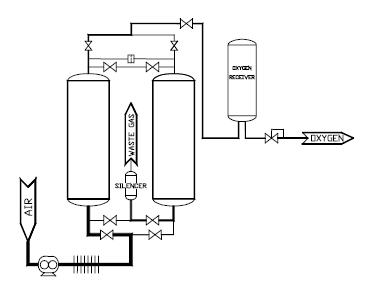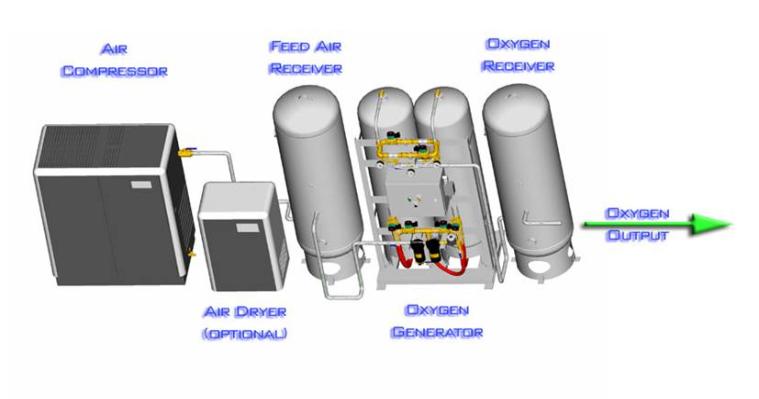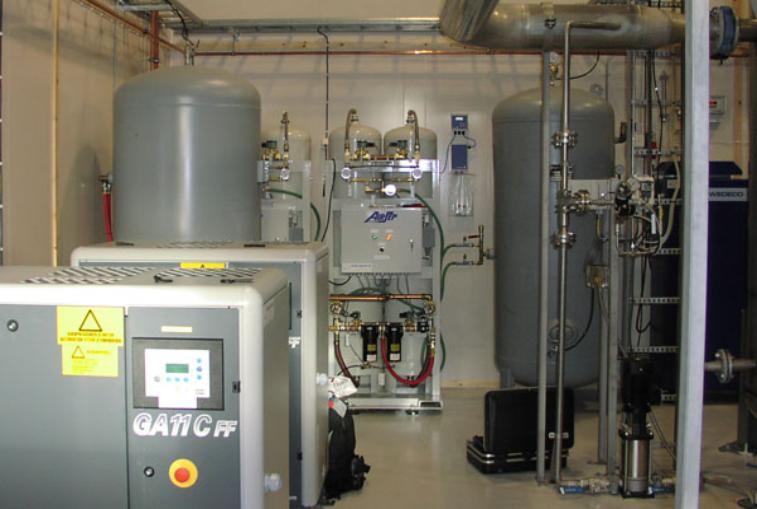- Phone: 800-492-1252
- Fax: 440-368-3569
- E-mail: info@spartanwatertreatment.com

Spartan supplies complete ozone generator packages which can include a variety of feed gas systems including oxygen concentrators. As noted in our discussion of ozone generator feed gas selection , the use of oxygen may be indicated for a variety of reasons including the need for the production of higher concentration ozone. Spartan is an OEM distributor of AirSep PSA oxygen concentrators (follow this link to a list of available systems and data sheets).
Air contains 21% oxygen and 78% nitrogen. Oxygen concentration systems separate oxygen from compressed air through a process known as pressure swing adsorption (PSA). This process (illustrated below) employs molecular sieves which adsorbs nitrogen from air at high pressure and releases the nitrogen at low pressure. Typically, these system employ two tanks filled with the absorbent. As compressed air flows through flows through one tank, the nitrogen is adsorbed. The oxygen passes through the system to the ozone generator. When the tank begins to saturate with nitrogen, the flow is switched to the other tank. At that point the pressure int eh first tank is lowered releasing the adsorbed nitrogen. It is purged with oxygen from the other tank. This process is repeated when the second tank is saturated with nitrogen. The result is a constant flow of gas with 90-95% oxygen content. The molecular sieve is long lived and relatively inexpensive.
As with air drying systems, the oxygen concentrator has a single key moving part, i.e. the valve that switches between the two tanks. Annual valve maintenance is recommended. Good quality compressed air is required at 90-100 psi to adsorb the nitrogen. Compressed air flow to oxygen output on a volume basis (SCFH air at 90-100 psi/SCFH oxygen 20-60 psi) is almost 10-20:1. This means that while energy is reduced in the ozone generator by running on oxygen instead of air, this is off set by the higher requirement for compressed air. For smaller systems where higher concentration ozone is required, oxygen concentrators probably offer better reliability and economics than liquid oxygen systems (LOX). As system size increases, LOX systems become more cost effective.
A pictorial schematic of a PSA system and a photograph of the same is shown below.

